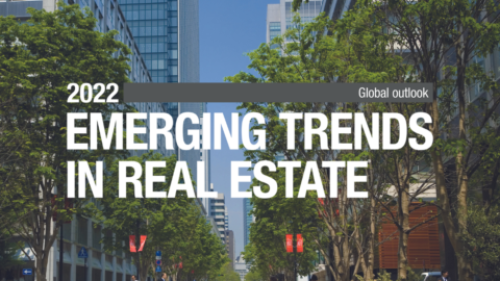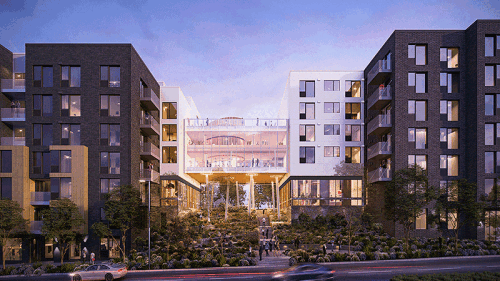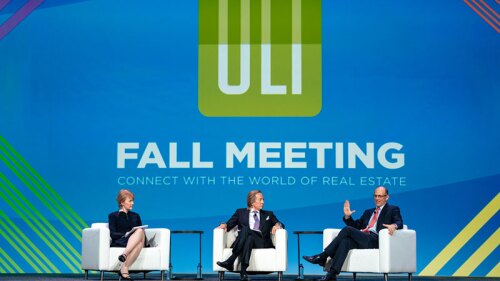Market Trends
The Dodge Momentum Index, a monthly measure of the initial report for nonresidential building projects, improved 5.7 percent in September from the revised August reading. In September, the commercial component of the index rose 2.9 percent, while the institutional component also increased, seeing a double-digit gain of 11.7 percent.
Building on the 2020 pilot and 2021 update focused on the COVID-19 pandemic’s implications for housing, the 2022 edition of the index explores the attainability implications of shifts in housing demand and regional competitiveness due to demographic changes, pandemic-influenced employer and employee location decisions, and the high cost of both building and finding homes in the largest and most economically vibrant regions.
In the context of an economic shock from the outbreak of war in Ukraine and continuing inflationary concerns, Emerging Trends in Real Estate ® Global Outlook 2022focuses on the global outlook for the real estate industry increasing pressure for finance to support the decarbonization of real estate. The industry challenges lenders and their regulators to provide debt for the retrofit of existing buildings and the scale-up of the “climate tech” needed.
ULI MEMBER–ONLY CONTENT: How can urban cores rebound from the pandemic? Members of ULI’s Urban Revitalization councils discuss the pandemic’s potential long-term effects on development in urban cores, opportunities for creative redevelopment, steps that municipalities can take, ways to enhance resilience in urban cores, and other trends.
Despite a forecast for higher inflation and rising interest rates, experts continue to have a favorable view on returns and performance for commercial real estate. However, the high tide of the improving economy is not raising all boats to the same level. There remains a clear bifurcation across and within property sectors.
The pandemic is a bit like jury duty: no one quite knows just how long it’s going to last. That analogy set the stage Tuesday morning for a panel discussion titled “Economic Outlook and What It Means for Real Estate”—with a keynote by Austan Goolsbee, professor of economics at the University of Chicago’s Booth School of Business, followed by a discussion with Constance Moore, former president and chief executive officer of BRE Properties and a ULI trustee and governor, and Roy March, chief executive officer of Eastdil Secured, also a ULI governor.
Renters are now the majority in more than 100 U.S. suburbs that were previously homeowner territory 10 years ago, according to an analysis of U.S. Census Bureau data by Yardi’s RentCafé. Another 57 suburbs are expected to follow suit in the next five years, with many of these suburbs belonging to the Miami, Washington, D.C., and Los Angeles metro areas.
The real estate industry can simultaneously combat inequality and boost property values by improving broadband access, according to a new ULI report. Broadband and Real Estate: Understanding the Opportunity, from the Institute’s Curtis Infrastructure Initiative, makes clear that high-speed internet is no longer a luxury but a necessity for participating in society and the economy.
The Dodge Momentum Index fell to 155.8 in July, a 6 percent decline from the revised June reading of 164.9. The index, issued by Dodge Data and Analytics, is a monthly measure of the initial report for nonresidential building projects in planning, which has been shown to lead construction spending for nonresidential buildings by a full year. The two components of the index fell in July—commercial planning by 3 percent and institutional planning by 9 percent.
History shows that well-managed cities are resilient to the ravages of pandemics and will evolve to become even more resilient, economist Ed Glaeser told attendees at the 2021 ULI Asia Pacific Summit.






